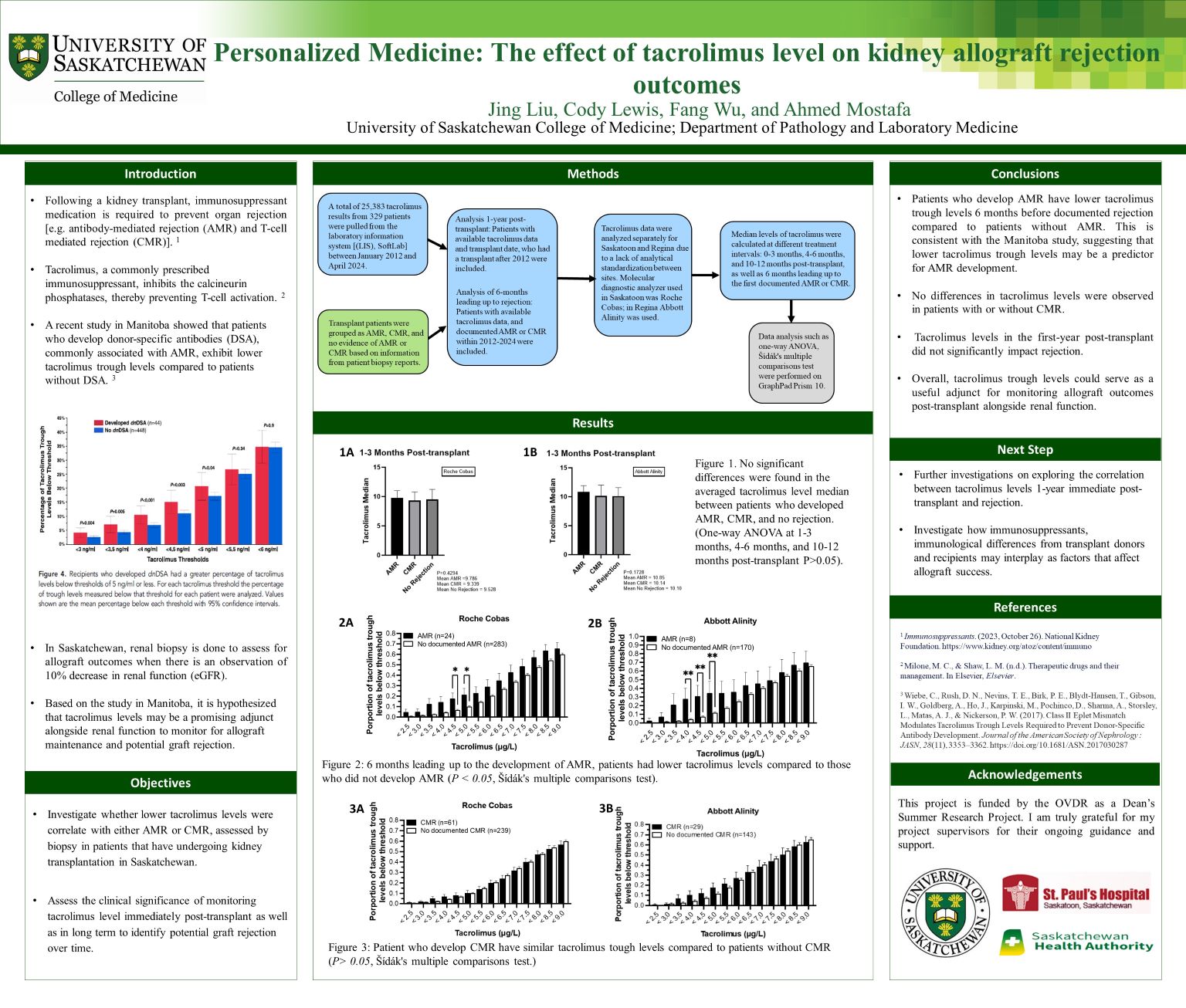
Personalized Medicine: The effect of tacrolimus level on kidney allograft rejection outcomes
Jing Liu
Study in Manitoba (Wiebe et al.) showed that kidney transplant patients who develop donor-specific antibodies (DSA), commonly associated with antibody-mediated rejection (AMR), exhibit lower tacrolimus trough levels compared to patients without DSA. This retroactive study investigates whether lower tacrolimus levels are correlated with AMR or cell-mediated rejection (CMR). Tacrolimus results from 329 patients were pulled from the laboratory information system [(LIS), SoftLab] from 2012 to 2024. Patients were grouped as AMR, CMR, and no evidence of AMR or CMR based their renal biopsy reports. Median tacrolimus levels were calculated at 0-3, 4-6, and 10-12 months post-transplant, and 6 months before the first documented AMR or CMR. No significant differences were found in the median tacrolimus levels during the first year of treatment, suggesting no significant impact on rejection. However, in the 6 months leading up to the development of AMR, patients had lower tacrolimus levels compared to those who did not develop AMR (P < 0.05, Šídák's multiple comparisons test). No differences in tacrolimus levels were observed in patients with or without CMR. Findings were consistent with the Manitoba study, suggesting that lower tacrolimus trough levels may be a predictor for AMR development.
